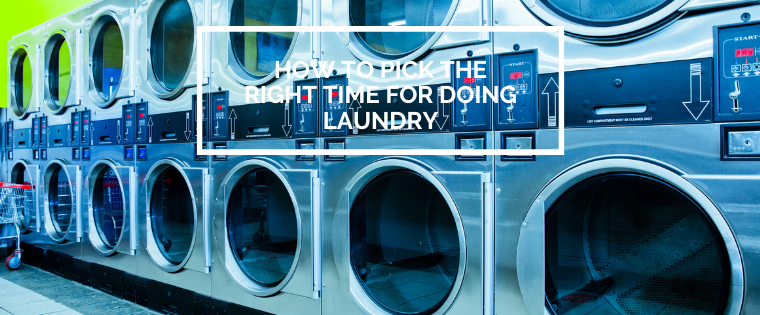Dry cleaning is a widely used cleaning method that helps maintain the integrity of delicate fabrics, making it ideal for items like suits, dresses, and upholstery. Beyond just cleaning, many people also turn to dry cleaning for its ability to remove stubborn odors from clothes. Whether it’s the smell of sweat, food, smoke, or even pet-related scents, odors can be persistent and challenging to remove with traditional washing. However, dry cleaning offers a solution. This essay explores how dry cleaning works, how it addresses odors, and whether it is truly effective at removing unwanted smells.
What is Dry Cleaning?
Dry cleaning is a cleaning process that uses chemical solvents instead of water to remove dirt, oils, and odors from fabrics. This method is preferred for clothes made from delicate fabrics such as silk, wool, and other materials that may shrink, stretch, or lose their shape when washed in water. The term “dry cleaning” can be a bit misleading since the process does involve liquids—specifically, non-water-based solvents like perchloroethylene (perc) or hydrocarbon-based chemicals. These solvents are capable of dissolving oils and grease, substances that regular detergents may struggle to address, making dry cleaning a preferred option for certain fabrics and stains.
Unlike regular washing, which relies on water and detergent, dry cleaning uses these solvents to lift dirt and grime from the fabric’s surface. The clothes are placed in a special machine that agitates the fabric while the solvent circulates, breaking down oils and other contaminants. After the cleaning phase, the solvent is extracted, and the clothes are dried in a controlled environment. Finally, the garments are pressed or steamed to restore their shape and eliminate any wrinkles. This process makes dry cleaning a highly effective method for cleaning clothes that cannot be washed with water.
How Does Dry Cleaning Work?
The dry cleaning process is systematic and designed to achieve the most thorough clean possible without damaging the fabric. The process begins with pre-treatment, where stains and odors are specifically targeted with specialized solutions. This step ensures that any stubborn or tough odors are addressed before the cleaning phase. Once pre-treatment is complete, the clothing is placed in a dry cleaning machine where solvents are used instead of water to clean the fabric. The solvent dissolves oils, dirt, and grease, which are then removed during the cleaning cycle.
After the cleaning is complete, the solvent is extracted from the clothing, and the items are dried in a machine that ensures the solvent evaporates completely. The final step involves finishing, where the clothes are pressed or steamed to remove any wrinkles, leaving them fresh and presentable. It is during this final step that any residual odors are usually neutralized, provided the right treatments were applied during the earlier stages of the process.
Types of Odors and Their Causes
To understand how dry cleaning addresses odors, it’s important to first consider the different types of odors that clothing can pick up. Common sources of odors include:
- Sweat Odor: Sweat is made up of water, salts, and oils, and when it mixes with bacteria on the skin, it can create a sour, unpleasant smell. The oils from sweat tend to cling to clothing fibers, making them difficult to remove with regular washing.
- Smoke Odor: Tobacco and other smoke-related odors are particularly troublesome. The chemicals from smoke, whether from cigarettes or fire, seep into fabric fibers, leaving behind a lingering smell that can be difficult to eliminate.
- Food Odors: Strong food smells, such as those from curry, garlic, or fish, often penetrate fabric fibers and remain even after washing. The oils and particles from food can absorb into the material, requiring specialized treatments for effective odor removal.
- Pet Odors: Pet odors, particularly those from animals like dogs or cats, are caused by oils, dander, and urine. These odors can easily cling to clothing and fabrics, especially if the pet frequently comes into contact with these items.
- Mildew and Mold: Clothes that have been left damp or in a humid environment for too long may develop a musty odor, caused by mildew or mold growth. These types of odors can be especially stubborn and challenging to remove.
Can Dry Cleaning Remove Odors?
Dry cleaning is particularly effective at removing many types of odors, but its success depends on the nature of the odor and the fabric.
For sweat odors, dry cleaning generally provides good results. The process breaks down the oils from sweat, which often carry the odor. By targeting the oils with specialized solvents, dry cleaning eliminates both the smell and the bacteria responsible for it. However, very old or deeply ingrained sweat odors may be more challenging to remove, especially if they have been absorbed into the fabric over time.
Smoke odors, which are notoriously difficult to eradicate, are also effectively treated with dry cleaning. The solvents used in dry cleaning can break down the chemicals left behind by smoke, removing the offensive smell. While dry cleaning significantly reduces smoke odor, extremely heavy exposure to smoke (like in the case of fire-damaged clothing) might require additional treatments beyond standard dry cleaning.
For food odors, dry cleaning can work well in most cases. When dealing with food smells like those from curry or garlic, the pre-treatment step is particularly important. Special solutions can be applied to treat the stain before the dry cleaning cycle, which helps lift the oils and particles from the fabric. However, certain strong odors, particularly those from foods that have left deep stains or absorbed heavily into the fabric, may need extra attention.
Pet odors can also be managed with dry cleaning, though this depends on the severity of the scent. The oils and dander left by pets can be broken down with the solvents used in dry cleaning, but heavily soiled or soiled areas may not always be completely odor-free after a single session. Sometimes, dry cleaners will offer specialized treatments for pet odors, which may improve results.
Why Dry Cleaning May Not Always Remove Odors
Despite its effectiveness, dry cleaning is not a guaranteed solution for all odors. Some odors, especially those that have deeply penetrated the fabric, may not be completely removed after a standard dry cleaning cycle. For instance, very old or strong odors that have soaked into the fabric fibers over time may resist even the best dry cleaning methods. Additionally, if the pre-treatment step is skipped or inadequately applied, tough odors may not be fully addressed.
Certain odors, such as mildew or mold, may also be challenging for dry cleaning to completely remove. In cases where the fabric has been damaged by mold growth, additional treatments, such as ozone treatments or professional deodorizing services, might be necessary.
Dry Cleaning vs. Regular Washing for Odor Removal
While dry cleaning can be more effective at removing certain types of odors, regular washing with water and detergent can also be an effective solution in some cases. The key difference is that dry cleaning uses solvents that break down oils and grease that water and detergent might miss. However, for less stubborn odors or for fabrics that can be washed at home, regular washing can often do the job.
Delicate fabrics, such as silk and wool, are often better suited for dry cleaning, as regular washing may cause them to shrink, lose shape, or become damaged. For other fabrics, such as cotton or polyester, regular washing can be a more cost-effective and accessible option for odor removal.
Professional Solutions for Persistent Odors
For particularly difficult odors, many dry cleaners offer specialized treatments designed to target tough smells. These treatments may include ozone treatments, which can neutralize odors at the molecular level, or activated charcoal bags, which absorb lingering smells. These services may come at an additional cost but can be a worthwhile investment for heavily soiled or odor-laden garments.
In conclusion, dry cleaning is an effective method for removing many types of odors from clothing. While it excels at eliminating odors like sweat, smoke, food, and pet smells, its success depends on factors such as the intensity of the odor and the type of fabric. Dry cleaning provides an excellent solution for delicate garments that cannot be cleaned with water, and it often delivers superior results compared to regular washing for stubborn odors. However, not all odors can be fully removed with dry cleaning alone, and in some cases, additional treatments may be necessary. For particularly persistent odors, seeking professional deodorizing treatments or combining dry cleaning with other methods may be the best approach.
FAQs
Does dry cleaning remove all types of odors?
Dry cleaning is effective at removing many common odors, such as sweat, smoke, food, and pet smells. However, it may not completely remove very stubborn odors, especially those that have deeply penetrated the fabric over time. In cases of persistent odors, additional treatments may be required.
How does dry cleaning remove odors?
Dry cleaning uses specialized solvents, such as perchloroethylene or hydrocarbon-based chemicals, which dissolve oils, dirt, and other contaminants that may hold odors. These solvents break down the oils that cause odors, effectively neutralizing them during the cleaning process.
Can dry cleaning remove smoke odors?
Yes, dry cleaning is effective at reducing smoke odors. The solvents used in dry cleaning break down the chemicals left behind by smoke, significantly reducing the smell. However, heavy smoke exposure (like from a fire) might require extra treatments beyond regular dry cleaning.
Will dry cleaning remove food odors?
Dry cleaning is generally good at removing food odors, especially with pre-treatment for greasy or oily food stains. However, strong smells like garlic, curry, or fish may sometimes require additional treatment, as the oils from food can penetrate fabric fibers more deeply.
Is dry cleaning effective for pet odors?
Dry cleaning can remove many pet-related odors, including those from oils, dander, and urine. However, for heavily soiled items or deep-set odors, a specialized pet odor treatment may be needed. If the odor is particularly strong, dry cleaning alone might not completely eliminate the smell.
Can dry cleaning remove mildew or mold odors?
Mildew or mold odors are more difficult to treat with dry cleaning alone. While dry cleaning can help reduce some of the smell, if mold has deeply affected the fabric, professional mold removal services or additional deodorizing treatments may be necessary.
Is dry cleaning better than regular washing for odor removal?
For certain odors, dry cleaning can be more effective than regular washing. The solvents in dry cleaning can break down oils and grease that regular detergent may miss. However, for less stubborn odors or for washable fabrics, regular washing may be sufficient.
How can I prevent odors from returning after dry cleaning?
To prevent odors from returning, it’s important to ensure that garments are properly stored in a dry, well-ventilated space. You can also use activated charcoal bags, fabric sprays, or store clothes in garment bags to keep them fresh between cleanings.
Does dry cleaning work on all fabrics?
While dry cleaning is suitable for many delicate fabrics like silk, wool, and synthetic blends, it may not be appropriate for all materials. Always check the garment’s care label to see if it is safe for dry cleaning, especially if it’s made from materials like leather or certain types of embroidery.
Are there alternative odor-removal treatments if dry cleaning doesn’t work?
Yes, there are other treatments that can be used alongside dry cleaning. These include ozone treatments, which neutralize odors at a molecular level, or activated charcoal bags that absorb lingering smells. Some dry cleaners also offer specialized odor removal services for tough cases.



